









































RIC One is designed to coordinate efforts between the twelve statewide Regional Information Centers (RICs). The centers work collaboratively as one to provide efficient and unified statewide technology leadership and innovative solutions. The RIC One Vendor Management Risk Operations Center (RIC One ROC) is implementing centralized, standardized, cost-effective, and sustainable processes to manage vendor risk. In Phase 1, during the 2023-2024 school year, the RIC One ROC focused on the protection of data. Specifically, the ROC focused on developing a structure that supports the efficient execution of Data Privacy Agreements. This page explains the RIC One ROC current and future functions. The functions are identified in the dark blue boxes. Important vendor management functions that are outside of the scope of the RIC One ROC are also identified in the light blue boxes. To learn more review the diagram below.
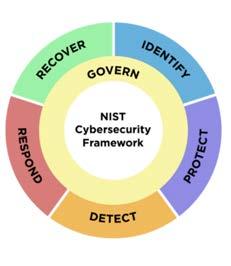


DUE DILIGENCE DATA PROTECTION PROCESSES

Strategic Sourcing and Procurement involves leveraging policies and processes to obtain technology and IT services in compliance with state laws and best practice. In the future, for priority vendors, the RIC ONE ROC plans to perform due diligence efforts to identify cybersecurity risks. (NIST CSF 2.0 GV.SC-06 Alignment)

MASTER SERVICE AGREEMENTS (MSAs) 1

DATA PRIVACY AGREEMENTS (DPAs)
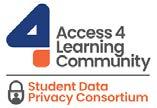


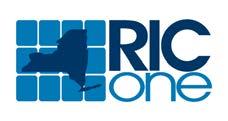
Contract Management involves negotiating terms that address legal and regulatory requirements. Additionally, other terms are negotiated to mitigate risk. The RIC One ROC works with data privacy partners, such as NYSED, A4L’s Student Data Privacy Consortium, and the TEC Student Data Privacy Alliance, to maintain a centralized and standardized structure that supports the negotiation, execution, and management of data privacy agreements. (NIST CSF 2.0 GV.SC-05 Alignment)


Risk Management involves implementing processes to minimize risks associated with third-party products and vendors. The RIC One ROC is developing processes to influence vendors’ cybersecurity postures, the quality of products and services, and vendors’ plans for existing and new solutions. (NIST CSF 2.0 GV.SC Alignment)

NEW YORK STATE REGIONAL INFORMATION CENTERS

This diagram includes information about product segmentation. The 2023-2024 pilot product scope and 2024-2025 anticipated product scope is defined. The rest of the information mirrors the diagram on Page 3. The new RIC One ROC processes complement existing BOCES collaborative contracts consortiums. Together, these centralized, standardized, cost-effective, and sustainable vendor management processes support NYS educational agencies in efficiently and effectively addressing priority vendor responsibilities.
SOLICITATION AND SELECTION PROCESSES 1 RIC ONE ROC PRODUCT SCOPE
STRATEGIC SOURCING

ONE ROC FUNCTIONS RIC ONE ROC PRODUCT SCOPE


NIST CSF ALIGNMENT

Strategic Sourcing and Procurement involves leveraging policies and processes to obtain technology and IT services in compliance with state laws and best practice. In the future, for priority vendors, the RIC ONE ROC plans to perform due diligence efforts to identify cybersecurity risks. (NIST CSF 2.0 GV.SC-06 Alignment)
‣ 2023-2024 Scope None
‣ 2024-2025 Scope New 7710 potential financial management systems and student management systems.

CONTRACTS MANAGEMENT
MASTER SERVICE AGREEMENTS (MSAs) 1

DATA PRIVACY AGREEMENTS (DPAs)




Contract Management involves negotiating terms that address legal and regulatory requirements. Additionally, other terms are negotiated to mitigate risk. The RIC One ROC works with data privacy partners, such as NYSED, A4L’s Student Data Privacy Consortium, and the TEC Student Data Privacy Alliance, to maintain a centralized and standardized structure that supports the negotiation, execution, and management of data privacy agreements. (NIST CSF 2.0 GV.SC-05 Alignment)
‣ 2023-2024 Scope Products, and the related vendors, selected by NYS pilot educational agencies.
‣ 2024-2025 Scope Products, and the related vendors, with access to students’ personally identifiable information.

RISK MANAGEMENT

DATA PROTECTION RISK MANAGEMENT
PRODUCT SCOPE DECISION-MAKING
‣ Product segmentation, categorization, and tiering strategies are used to assist agencies in allocating the right resources to the right products.
‣ The ROC uses these strategies to inform resource allocation.
‣ The scope of products addressed varies based on Function.
‣ Example segmentation, categorization, and tiering criteria are highlighted below.
PERFORMANCE RISK MANAGEMENT VALUE RISK MANAGEMENT
Risk Management involves implementing processes to minimize risks associated with third-party products and vendors. The RIC One ROC is developing processes to influence vendors’ cybersecurity postures, the quality of products and services, and vendors’ plans for existing and new solutions. (NIST CSF 2.0 GV.SC Alignment)
Data Protection Risk Management
‣ 2023-2024 Scope SchoolTool
‣ 2024-2025 Scope Tiering-informed products from the 793 Appendix C Section 7710.
Performance Risk Management 2023-2025 Scope 7710 products to be determined based on Directors’ decision-making.
Value Risk Management 2023-2025 Scope None
1 There are other consortium and collaboration structures that the BOCES and RICs leverage to support the areas that are out of scope. For example, Capital Region BOCES and Erie 1 BOCES manage contract consortiums.


DATA PRIVACY AGREEMENTS (DPAs)
a centralized, standardized, costeffective, and sustainable DPA structure RISK
DATA PROTECTION RISK MANAGEMENT
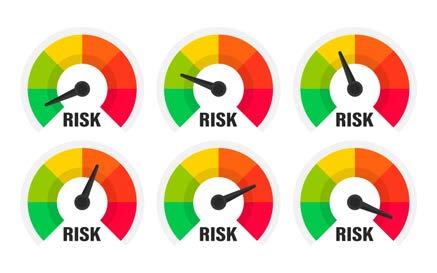
This Function includes processes to streamline DPA negotiation work. Standardized language, a centralized negotiation team, and piggybacking functionality is used to support the execution of DPAs. School districts and BOCES can leverage the structure.




This function only addresses DPA needs. Educational Agencies will continue to negotiate or accept the standard terms defined in a Master Service Agreement.
PRODUCTS ARE TIERED TO SUPPORT RESOURCE ALLOCATION

PERFORMANCE RISK MANAGEMENT VALUE RISK MANAGEMENT
processes to manage vendor risks
DPAs THAT PROTECT STUDENT DATA FOR A BROAD SCOPE OF PRODUCTS

Tiering drives resource allocation related to Risk Management. Data sensitivity, service criticality, service dependency, participation levels, and switch costs are examples of criteria that impact tiering.
TIER 1
VENDORS TOP PRIORITY


This Function includes processes that are used to infl cybersecurity postures, the quality of products and services, and vendors’ plans for existing and new solutions.
DATA PROTECTION
VENDORS’ CYBERSECURITY POSTURE
PRODUCT PERFORMANCE
QUALITY OF PRODUCTS
PRODUCT VALUE
VENDORS’ PRODUCT ROADMAPS
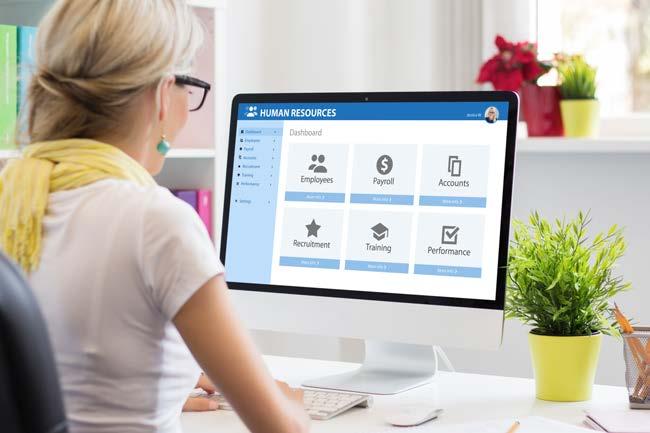

MONITORING AND MANAGING PRIORITY RIC-SUPPORTED PRODUCTS

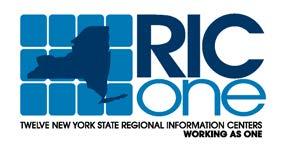

The RIC One ROC manages centralized, standardized, cost-effective, and sustainable processes to minimize vendor risk. One of the primary RIC One ROC roles is to streamline processes associated with contractual needs related to the protection of student data. In partnership with NYSED, the RICs are working with multi-state and national data privacy and security alliances invested in the K-12 vendor ecosystem to support the negotiation of data privacy agreements (DPAs). This page provides details about the RIC One ROC’s function that supports the execution of Data Privacy Agreements.
At the national level, NYSED maintains an Access 4 Learning (A4L) Community membership. A4L manages an alliance that focuses on initiatives to support student privacy called the Student Data Privacy Consortium (SDPC). Through NYSED’s membership, NYSED, school districts, and BOCES are able to leverage A4L SDPC’s National Data Privacy Agreement (NDPA). At the multi-state level, the RICs maintain a TEC Student Data Privacy Alliance (TEC SDPA) membership. Through this membership, districts and BOCES can piggyback on existing agreements and request new agreements that leverage the NDPA. TEC and the ROC work together to support the negotiation of NYS terms.

The RIC ROC DPA management structure and a strategic field implementation plan was developed to support the state in leveraging the NDPA in a responsible manner. To complement the standard national terms, state-specific terms were developed by NYSED leaders/ attorneys, TEC attorneys, BOCES attorneys, RIC cybersecurity specialists, and RIC leaders. Contract managers and attorneys support the negotiation of DPAs using this common language. Once an educational agency executes an agreement negotiated by the centralized team, other agencies can piggyback on that DPA. In addition to supporting the efficient execution of DPAs, this new structure is used to support school districts, BOCES, RICs, and NYSED in holding vendors accountable, as common terms are negotiated into these agreements. This will be particularly valuable as NYSED and BOCES/RICs engage with vendors regarding breaches and security vulnerabilities. It is important to note that the approach will not address all field challenges. There are vendors unwilling to agree to the required terms. The diagram below illustrates the processes local educational agencies (LEAs) can use to access these DPAs. The top option is the process for piggybacking. Below the piggybacking option is the process to follow if there isn’t an existing agreement in place.


RIC ONE ROC DATA PROTECTION RISK MANAGEMENT FUNCTION
The RIC One ROC is implementing centralized, standardized, cost-effective, and sustainable processes to manage vendor risk. One of the primary RIC One ROC roles will be to monitor and influence vendors’ data security controls. This will be done through functions that assist the centers in understanding, prioritizing, responding to, and monitoring risks over the course of the relationship. Vendor tiering will be used to prioritize products that are managed through these structures. Please be aware that this function is not yet developed and the high-level vision and plan documented on this page is expected to be refined.
RIC ONE ROC TIERING LEVELS AND CRITERIA USED
Tiering drives resource allocation related to Risk Management. Tiering levels and criteria are illustrated below.

TIERING LEVELS
TIER 1 VENDORS TIERING CRITERIA


CRITICALITY
RIC ONE ROC PROCESSES TO MONITOR AND INFLUENCE VENDORS' DATA
The ROC will engage with vendors to support proactive planning regarding critical data security controls and to verify vendors are complying with priority contractual obligations.


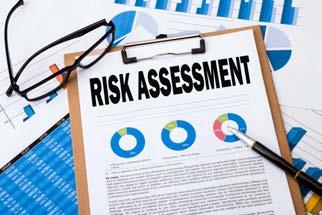

These RIC One Data Protection Risk Management Processes align with the NIST CSF 1.1 and 2.0 Supply Chain Category. Currently, NIST CSF 1.1 is the Standard for Data Privacy and Security for NYS Education Agencies. Below are example controls aligned with this RIC One ROC function from the 2.0 framework.



Chantal Corbin Central New York RIC ccorbin@cnyric.org

Brittany Rizzo Mohawk RIC brizzo@moric.org

Don Harple Northeastern RIC don.harple@neric.org

Lori DeForest Central New York RIC ldeforest@cnyric.org

Joe Bufano Central New York RIC jbufano@ocmboces.org





Kathleen Moorhead ROC Consultant patonconsultingllc@gmail.com
Mike Doughty Northeastern RIC michael.doughty@neric.org Tom Guillon South Central RIC tguillon@btboces.org



Heather Mahoney Mohawk RIC hmahoney@moric.org

Ashleen Speen South Central RIC aspeen@btboces.org Monica Statile Northeastern RIC monica.statile@neric.org

Ryan Mahoney Mohawk RIC rmahoney@moric.org

Chris Grieco Mohawk RIC cgrieco@moric.org

Kristine Kipers Mohawk RIC kkipers@moboces.org

Chrissy Choi South Central RIC cchoi@btboces.org




Phil Sage South Central RIC psage@btboces.org

Kelly Twitchell South Central RIC ktwitche@btboces.org

KellyRose Yaeger Northeastern RIC kellyrose.yaeger@neric.org

David Pellow Mohawk RIC dpellow@moboces.org





